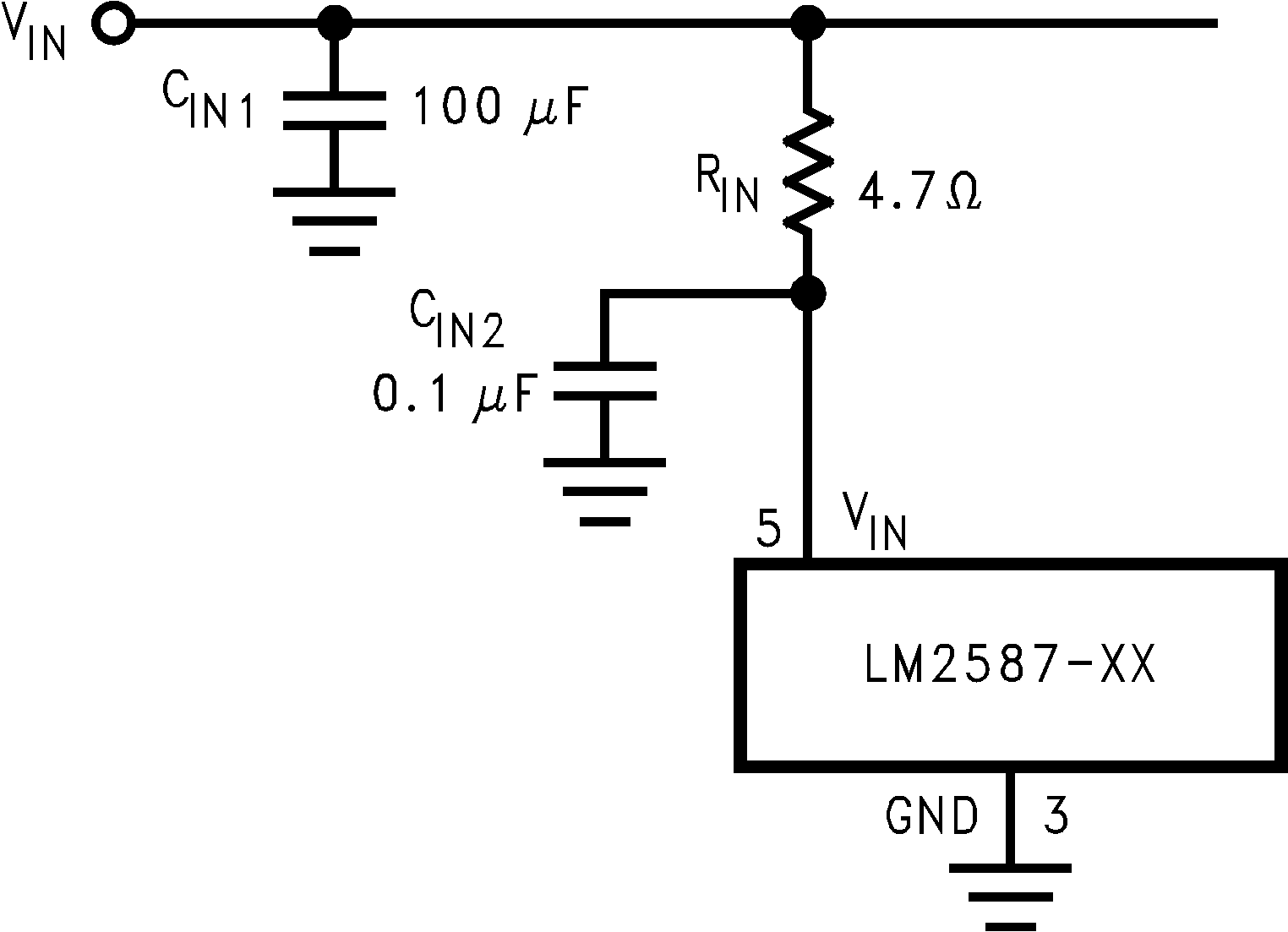ZHCS517E April 2000 – June 2019 LM2587
PRODUCTION DATA.
- 1 特性
- 2 典型 应用
- 3 说明
- 4 修订历史记录
- 5 Pin Configurations
-
6 Specifications
- 6.1 Absolute Maximum Ratings
- 6.2 ESDRatings
- 6.3 Recommended Operating Ratings
- 6.4 Thermal Information
- 6.5 Electrical Characteristics: 3.3 V
- 6.6 Electrical Characteristics: 5 V
- 6.7 Electrical Characteristics: 12 V
- 6.8 Electrical Characteristics: Adjustable
- 6.9 Electrical Characteristics: All Output Voltage Versions
- 6.10 Typical Characteristics
- 7 Detailed Description
- 8 Application And Implementation
- 9 Layout
- 10器件和文档支持
- 11机械、封装和可订购信息
封装选项
机械数据 (封装 | 引脚)
散热焊盘机械数据 (封装 | 引脚)
- KTT|5
订购信息
8.2.4.5 Switch Voltage Limits
In a flyback regulator, the maximum steady-state voltage appearing at the switch, when it is off, is set by the transformer turns ratio, N, the output voltage, VOUT, and the maximum input voltage, VIN (Max):
where VF is the forward biased voltage of the output diode, and is 0.5V for Schottky diodes and 0.8V for ultra-fast recovery diodes (typically). In certain circuits, there exists a voltage spike, VLL, superimposed on top of the steady-state voltage (see Figure 13, waveform A). Usually, this voltage spike is caused by the transformer leakage inductance and/or the output rectifier recovery time. To “clamp” the voltage at the switch from exceeding its maximum value, a transient suppressor in series with a diode is inserted across the transformer primary (as shown in the circuit on the front page and other flyback regulator circuits throughout the datasheet). The schematic in Figure 59 shows another method of clamping the switch voltage. A single voltage transient suppressor (the SA51A) is inserted at the switch pin. This method clamps the total voltage across the switch, not just the voltage across the primary.
If poor circuit layout techniques are used (see the Layout Guidelines section), negative voltage transients may appear on the Switch pin (pin 4). Applying a negative voltage (with respect to the IC's ground) to any monolithic IC pin causes erratic and unpredictable operation of that IC. This holds true for the LM2587 IC as well. When used in a flyback regulator, the voltage at the Switch pin (pin 4) can go negative when the switch turns on. The “ringing” voltage at the switch pin is caused by the output diode capacitance and the transformer leakage inductance forming a resonant circuit at the secondary(ies). The resonant circuit generates the “ringing” voltage, which gets reflected back through the transformer to the switch pin. There are two common methods to avoid this problem. One is to add an RC snubber around the output rectifier(s), as in Figure 59. The values of the resistor and the capacitor must be chosen so that the voltage at the Switch pin does not drop below −0.4V. The resistor may range in value between 10Ω and 1 kΩ, and the capacitor will vary from 0.001 μF to 0.1 μF. Adding a snubber will (slightly) reduce the efficiency of the overall circuit.
The other method to reduce or eliminate the “ringing” is to insert a Schottky diode clamp between pins 4 and 3 (ground), also shown in Figure 59. This prevents the voltage at pin 4 from dropping below −0.4V. The reverse voltage rating of the diode must be greater than the switch off voltage.
 Figure 60. Input Line Filter
Figure 60. Input Line Filter